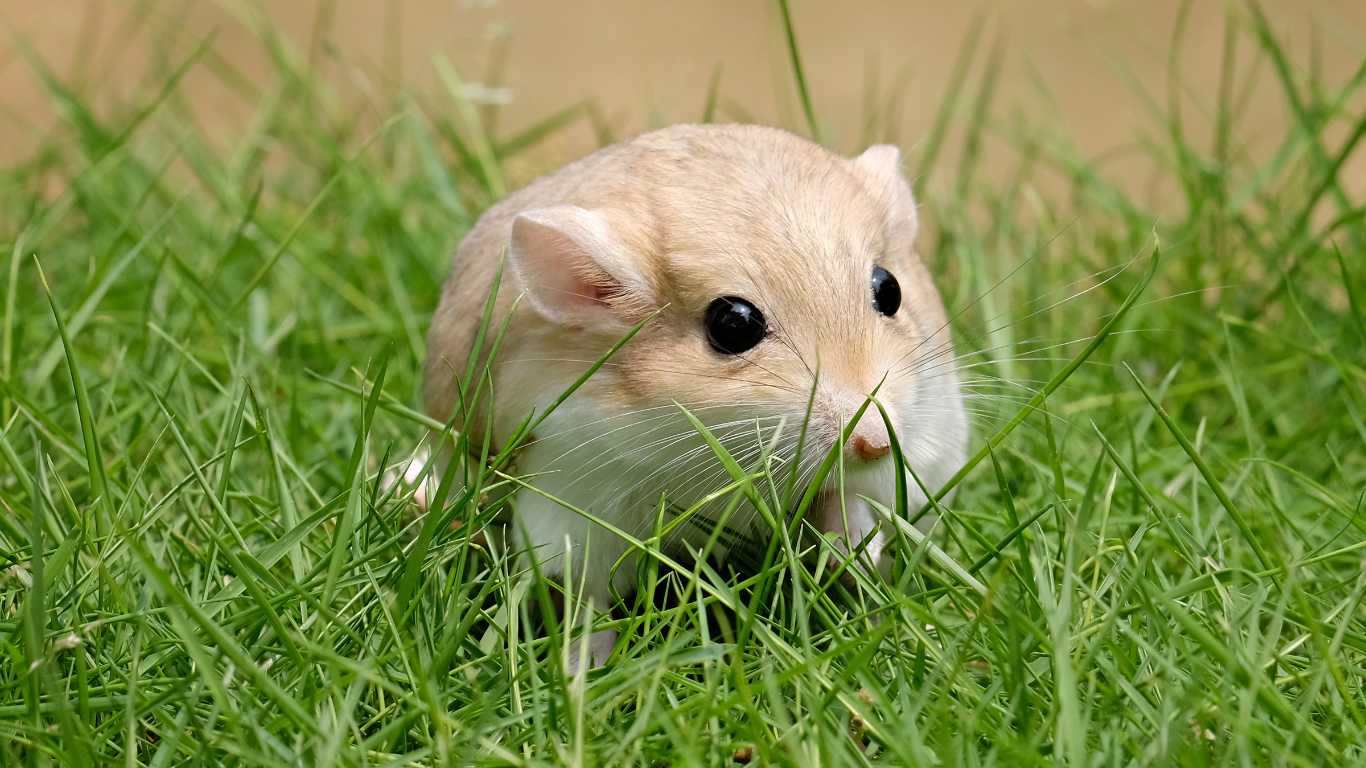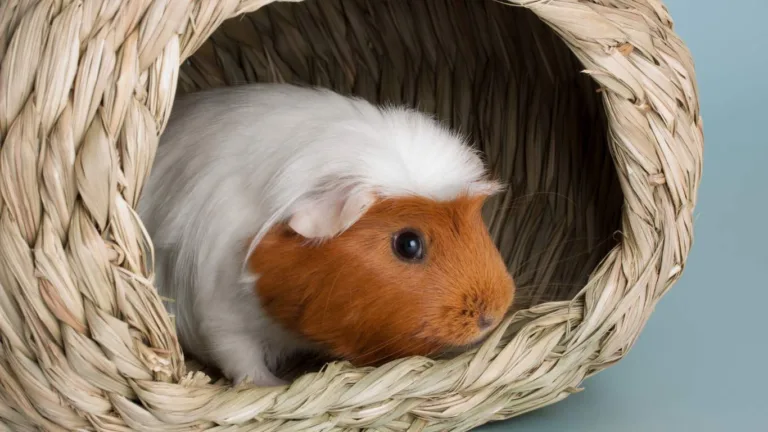Hamsters, these adorable little rodents, bring joy and companionship to many households. But have you ever wondered how long do hamsters live? In this guide, we’ll explore the average lifespan of hamsters, factors that can affect their longevity, common health conditions they may experience, and how you can improve their lifespan to ensure they live a happy and healthy life.
Paw-Some Insights:
Hamster Life Cycle
Hamsters go through different stages in their life cycle. Understanding these stages is essential for providing appropriate care and meeting their specific needs at each phase of their development. Let’s take a closer look at the various stages of a hamster’s life:
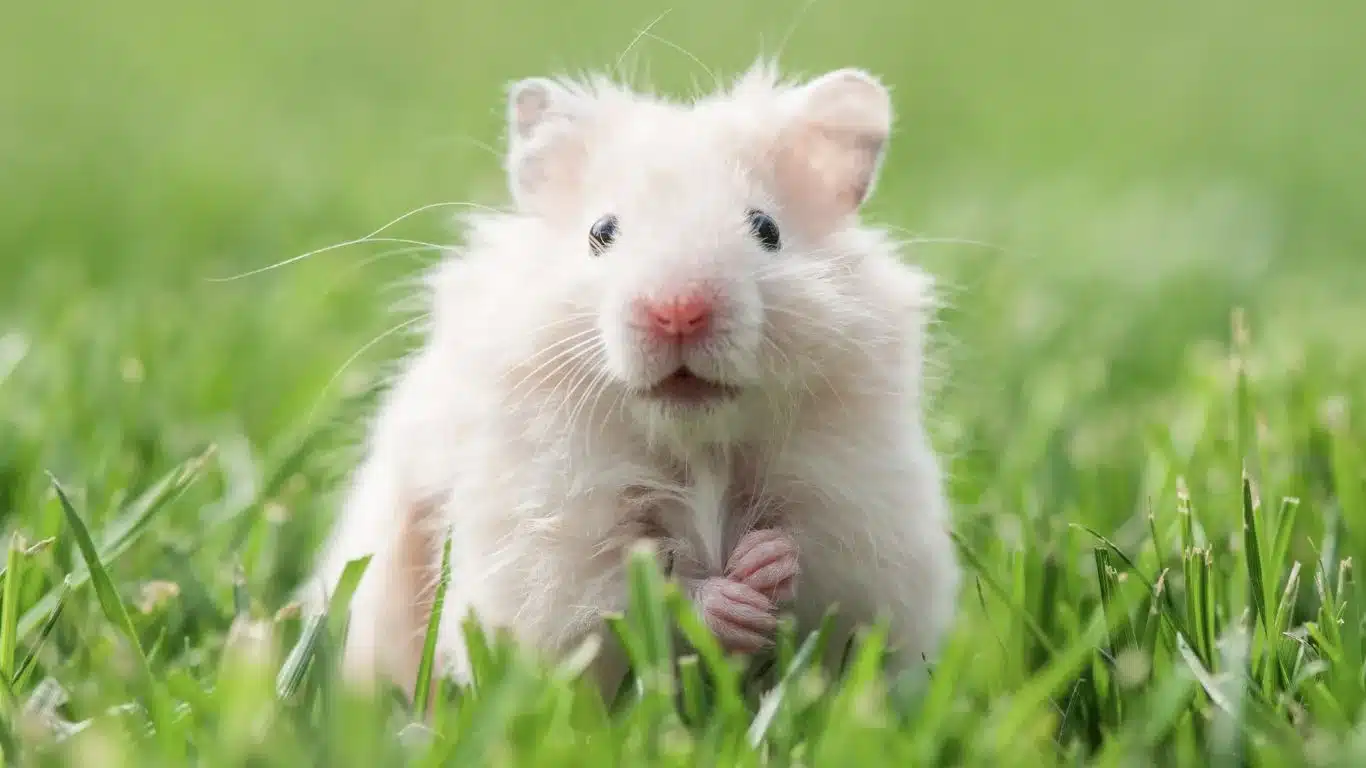
Birth
When hamsters are born, they are blind, deaf, and hairless. They entirely rely on their mother for warmth and nourishment.
Early Development
Within five days, a hamster’s fur starts to grow, providing insulation and protection. At about two weeks old, their eyes begin to open, allowing them to explore their surroundings.
Mother Bonding
Hamsters typically stay with their mothers until they are 21-28 days old. During this critical period, they learn important social and survival skills from their mother.
Sexual Maturity
Hamsters reach sexual maturity at 4-6 weeks old. However, breeding is recommended to be delayed until they are at least 8-12 weeks old and weigh 90-100 grams. This allows them to reach optimal physical development before reproduction.
Gestation Period
Once a female hamster becomes pregnant, the gestation period lasts for approximately 20-22 days. During this time, it is crucial to provide a quiet and stress-free environment to ensure the well-being of the expectant mother.
Elderly Stage
By the age of about 14 months, hamsters are considered elderly and may no longer be able to breed. At this stage, their activity levels may decrease, and they may develop age-related health issues.
To summarize, the life cycle of a hamster encompasses the stages of birth, early development, mother bonding, sexual maturity, gestation period, and the elderly stage. Understanding these stages allows hamster owners to provide the appropriate care and ensure the well-being of their furry companions throughout their lives.

Factors Affecting Hamster Lifespan
Various factors can influence the lifespan of a hamster, leading to differences in how long they live. These factors include:
- Domestication: Domesticated hamsters generally live longer than their wild counterparts due to improved living conditions, reduced predation, and access to proper veterinary care.
- Genetics: Different hamster breeds may have varying susceptibilities to specific health conditions, which can affect their lifespan. Understanding the breed-specific genetic factors can inform better care.
- Overall Health and Care: The quality of care provided to a hamster has a significant impact on its lifespan. Proper nutrition, appropriate housing, regular handling, and routine veterinary care contribute to overall well-being and longevity.
- Stress and Illness: High levels of stress, along with certain illnesses, can have detrimental effects on a hamster’s health and lifespan. Reducing stress and promptly addressing any health issues is crucial for ensuring longevity.
- Nutritional Deficiencies: Hamsters require a balanced diet to thrive. Nutritional deficiencies can lead to various health problems that can ultimately affect lifespan. Providing a well-rounded and nutrient-rich diet is essential.
By understanding and addressing these factors, hamster owners can help maximize their pets’ lifespan and ensure they live happy and healthy lives.
Comparison of Factors Affecting Hamster Lifespan
| Factors | Impact |
|---|---|
| Domestication | Increases lifespan due to improved conditions and reduced predation |
| Genetics | Influences susceptibility to breed-specific health conditions |
| Overall Health and Care | Proper care, nutrition, and veterinary attention contribute to longevity |
| Stress and Illness | High levels of stress and untreated illnesses can shorten lifespan |
| Nutritional Deficiencies | Poor diet can lead to health problems and decreased lifespan |
Common Health Conditions in Hamsters
Hamsters are adorable and popular pets known for their small size and playful nature. However, like any living creature, hamsters are prone to certain health conditions that can affect their overall well-being and lifespan. By being aware of these common health issues, you can take proactive steps to ensure your furry friend stays happy and healthy.
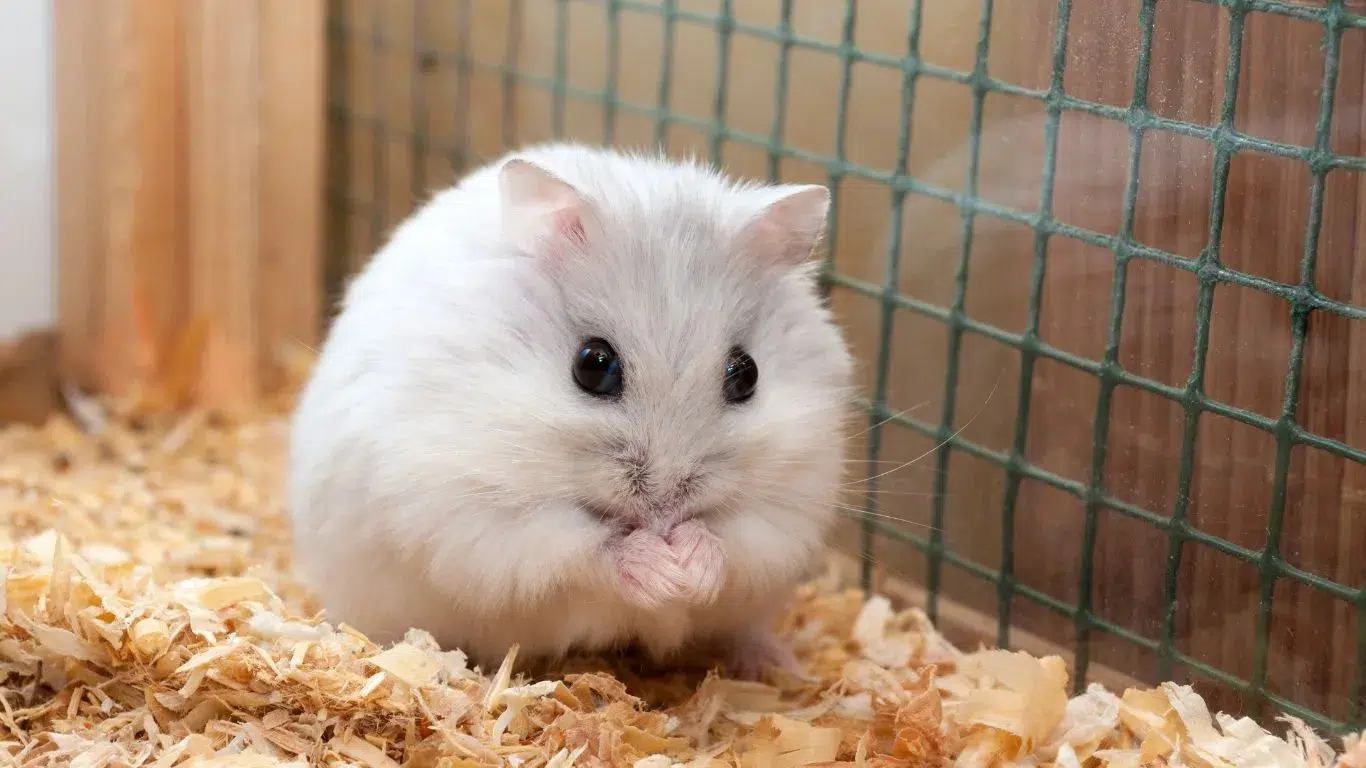
Common Hamster Illnesses
Here are some of the most prevalent health conditions encountered in pet hamsters:
| Condition | Description |
|---|---|
| Diarrhea | A loose stool that can lead to dehydration and weight loss. |
| Fur Loss | Patches of hair loss on the hamster’s body, often caused by stress, mites, or allergies. |
| Eye Proptosis | An abnormal protrusion of the eye, usually caused by injury or infection. |
| Mites | Parasites that can cause itching, hair loss, and skin irritation in hamsters. |
| Ringworm | A fungal infection characterized by circular lesions on the skin, often accompanied by hair loss. |
| Cheek Pouch Disorders | Issues related to the hamster’s cheek pouches, such as impacted or infected pouches. |
| Heart Disease | A condition that affects the hamster’s cardiovascular system, leading to weak heart function. |
| Kidney Disease | Deterioration of the hamster’s kidney function, leading to health complications. |
| Diabetes | A metabolic disorder characterized by high blood sugar levels, which can affect multiple organs. |
| Dental Problems | Issues with the hamster’s teeth, such as overgrowth or malocclusion, which can lead to pain and difficulty eating. |
| Cancer | Abnormal cell growth that can manifest in various parts of the hamster’s body. |
| Amyloidosis | A disorder characterized by the accumulation of abnormal proteins, affecting multiple organs. |
Keep in mind that certain hamster breeds may be more susceptible to specific ailments. For example, striped black and Djungarian hamsters are prone to diabetes, Djungarian hamsters have a higher risk of glaucoma, and Syrian hamsters are more prone to heart disease, amyloidosis, and pneumonia.
It’s important to note that prevention and early detection play a crucial role in managing these health conditions. Ensuring your hamster receives a balanced and nutritious diet, a clean and suitable living environment, and regular veterinary check-ups can go a long way in promoting their overall well-being and lifespan.
Take the time to learn about your hamster’s specific needs and behaviors, so you can quickly identify any signs of illness or discomfort. By providing the best care possible, you can enjoy many happy years with your adorable little companion.
How to Improve Hamster Lifespan
If you want to ensure that your hamster lives a long and healthy life, there are several key strategies you can follow. By focusing on their diet, environment, exercise, and overall care, you can maximize your hamster’s lifespan and promote optimal well-being. Here are some tips for increasing hamster longevity:
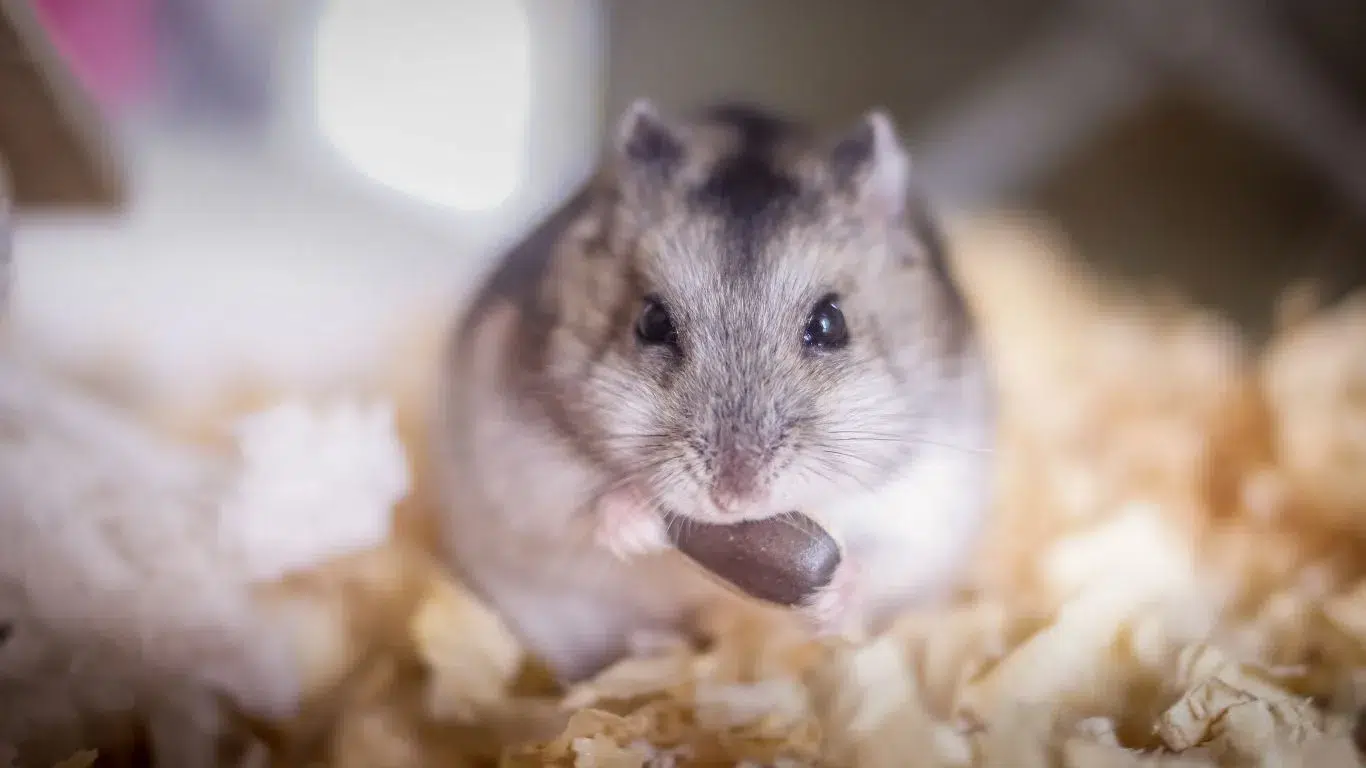
- Provide a Proper Diet: A balanced and nutritious diet is crucial for your hamster’s health. Opt for commercially produced pelleted rodent food as the main component of their diet. Avoid high-sugar and high-fat foods to prevent diabetes and obesity. Grains, fruits, and vegetables can be given as occasional treats to add variety and additional nutrients.
- Ensure Adequate Living Space: Hamsters need plenty of space to move around and explore. Invest in a spacious and secure cage that allows for natural behaviors, such as tunneling and climbing. Provide ample bedding material for burrowing and nesting.
- Promote Regular Exercise: Hamsters are active creatures that require exercise to stay healthy. Provide enrichment activities such as tubes, tunnels, and exercise wheels that encourage physical activity. Regular exercise helps to maintain a healthy weight, supports cardiovascular health, and reduces stress.
- Maintain Suitable Temperature and Humidity: Hamsters are sensitive to extreme temperatures and humidity. Keep their environment within a suitable range (around 68-75°F or 20-24°C) to prevent heat stress or chilling. Avoid exposing them to drafts or direct sunlight.
By following these tips, you can improve your hamster’s lifespan and provide them with the best possible care. Remember to monitor their health regularly and consult a veterinarian if you notice any signs of illness or distress.
| Strategies for Maximizing Hamster Lifespan |
|---|
| Provide a balanced and nutritious diet |
| Ensure a spacious and secure living environment |
| Promote regular exercise and enrichment activities |
| Maintain suitable temperature and humidity |
Don’t Miss Out on Their Well-being
“Caring for your hamster’s needs is essential for their overall well-being. By prioritizing their diet, environment, exercise, and health care, you can significantly enhance their lifespan and ensure their happiness.”
The Most Common Disorders in Pet Hamsters
A study conducted by the Royal Veterinary College (RVC) revealed the most common disorders in pet hamsters. Understanding these health issues is essential for hamster owners and veterinarians in providing appropriate care and ensuring the well-being of these beloved pets.
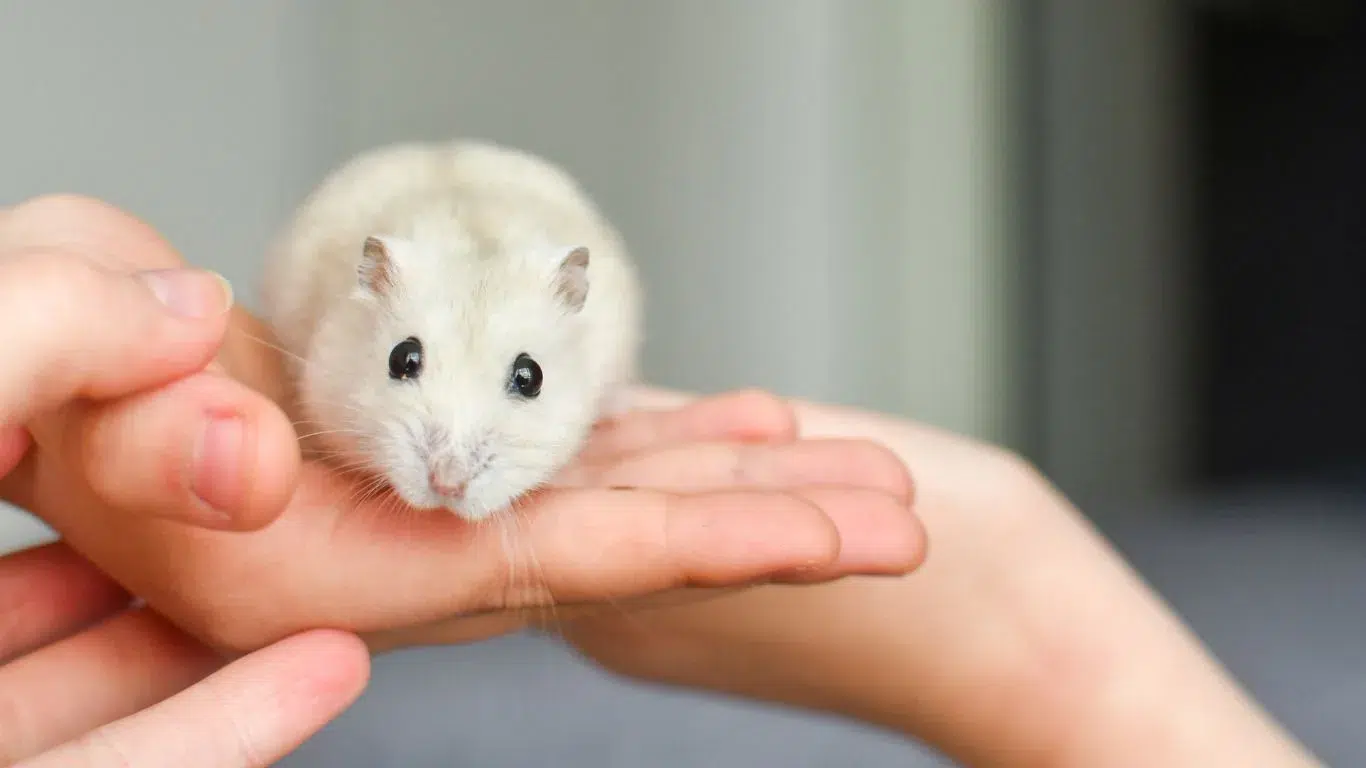
- “Wet Tail” (Diarrhea or Liquid Discharge):
- Bite Injuries from Other Hamsters:
- Overgrown Nails and/or Incisors:
- Traumatic Injury:
The average lifespan of pet hamsters, as found in the study, is approximately 1.75 years. It is important for owners to be aware of these common disorders and take preventive measures to promote the overall health and longevity of their pet hamsters.
| Disorder | Prevention Measures |
|---|---|
| “Wet Tail” (Diarrhea or Liquid Discharge) | Provide a balanced diet, maintain proper hygiene, minimize stress, and seek immediate veterinary care for treatment. |
| Bite Injuries from Other Hamsters | Ensure adequate living space, separate hamsters if necessary, and supervise interactions among them. |
| Overgrown Nails and/or Incisors | Regularly trim nails, provide suitable chew toys, and ensure a well-balanced diet. |
| Traumatic Injury | Ensure a safe cage environment, remove any potential hazards, and provide appropriate bedding and cage structures. |
Factors Affecting Hamster Lifespan by Species
When it comes to the lifespan of hamsters, different species can exhibit variations in their longevity and susceptibility to specific health conditions. Understanding these factors is crucial for hamster owners and veterinarians to provide customized care and make informed decisions about their well-being.
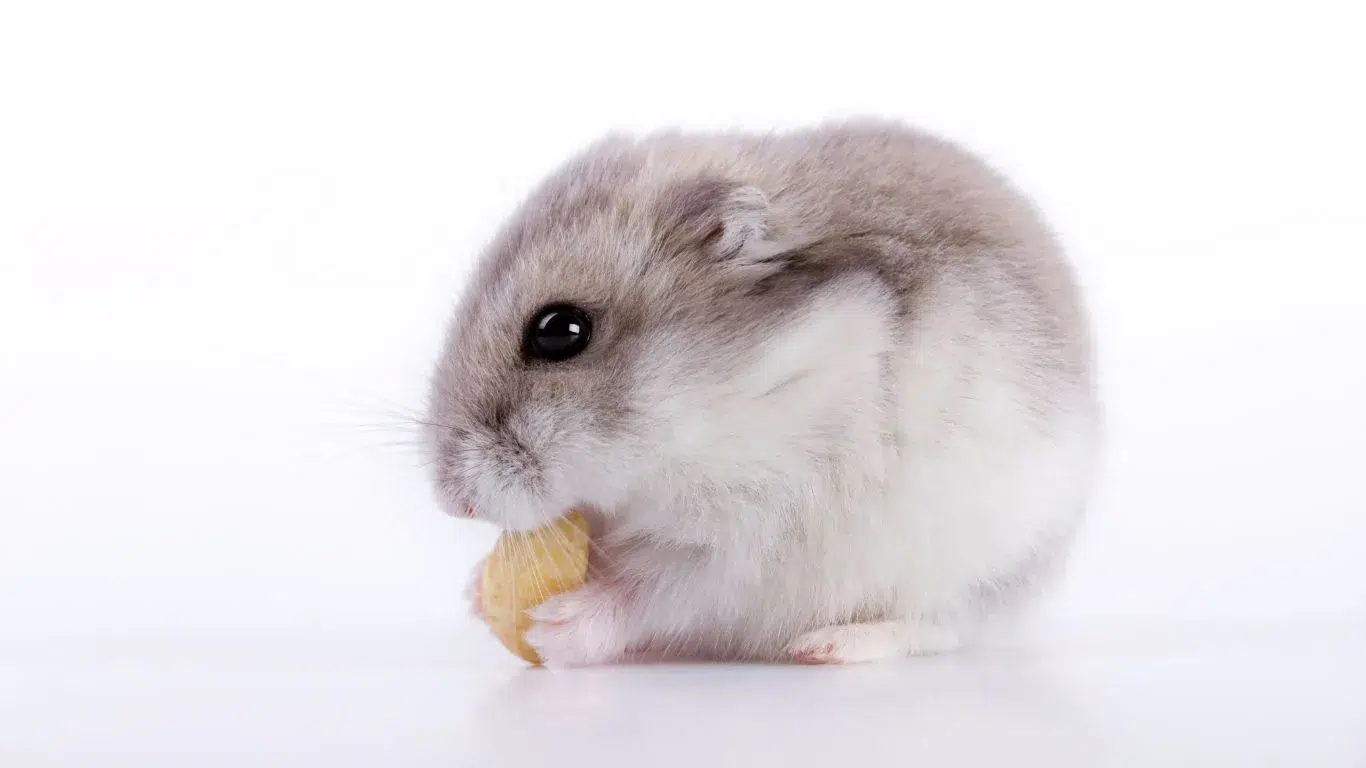
One of the most popular hamster breeds, the Syrian (golden) hamsters, have been observed to have a higher risk of certain disorders compared to other breeds. Female Syrian hamsters, in particular, are more prone to reproductive disorders, urinary system disorders, and appetite issues. Furthermore, the average count of disorders in Syrian hamsters tends to be higher than in other breeds.
By recognizing these species-specific factors, you can ensure that your hamster receives the appropriate care and attention to maintain their health and maximize their lifespan. Regular veterinary check-ups, a balanced diet, and a comfortable environment tailored to their specific needs can contribute to your hamster leading a happy and healthy life.
Key Takeaways:
- Different hamster species exhibit variations in lifespan and susceptibility to specific health conditions.
- Syrian (golden) hamsters have a higher risk of female reproductive disorders, urinary system disorders, and appetite issues compared to other breeds.
- Understanding species-specific factors allows for tailored care and informed decisions regarding your hamster’s health.
Providing the necessary care and attention based on your hamster’s breed can significantly impact their overall well-being and lifespan.
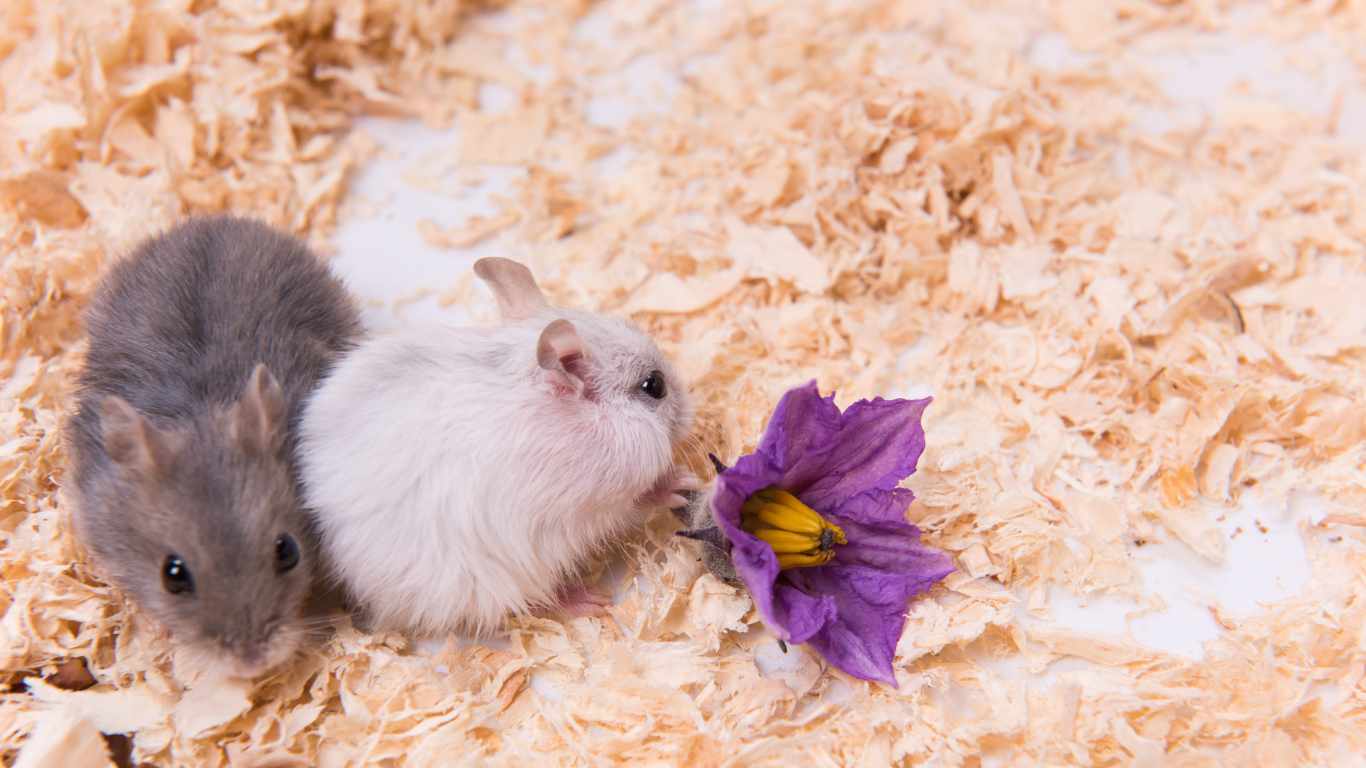
Study on Pet Hamster Health
The Royal Veterinary College (RVC) conducted a comprehensive study on pet hamster health, filling significant knowledge gaps in understanding the health issues of these beloved rodents. The study analyzed anonymized veterinary clinical records of nearly 4,000 hamsters and identified the most common disorders, causes of death, and average lifespan. This research provides valuable insights for hamster owners, veterinarians, and veterinary students in improving the care and treatment of pet hamsters.
In the study conducted by the RVC, researchers meticulously analyzed veterinary clinical records of 3,985 pet hamsters over a five-year period. The objective was to gain a better understanding of the health issues that hamsters commonly face and their overall lifespan.
Through this comprehensive analysis, the study identified the most prevalent health conditions in pet hamsters, shedding light on the challenges that hamster owners and veterinarians may encounter. The research also investigated the primary causes of death among pet hamsters, providing crucial insights into their health and longevity.
The study revealed that the average lifespan of pet hamsters is approximately 1.75 years. This finding underscores the importance of understanding and addressing the prevalent health issues that can impact a hamster’s overall well-being and longevity.
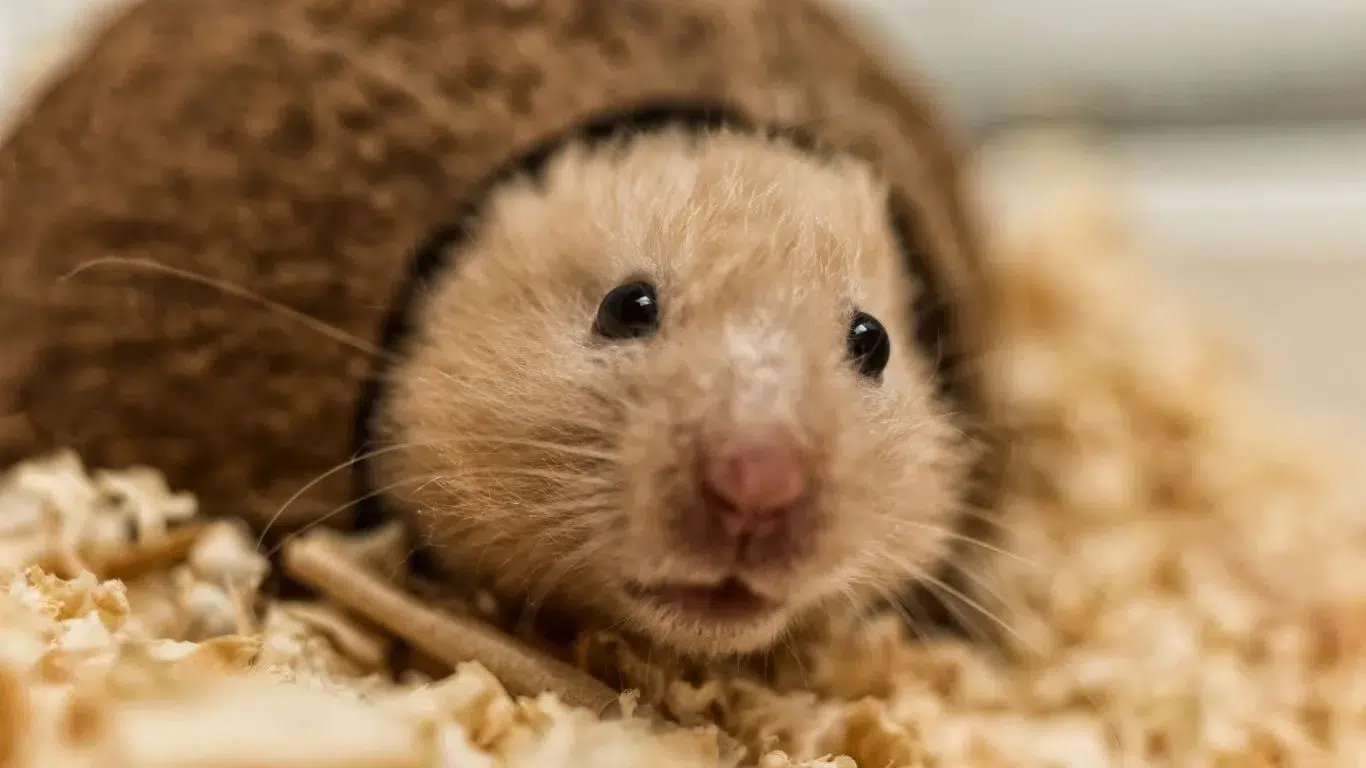
By delving into anonymized veterinary records, the study has enriched our understanding of various health conditions affecting pet hamsters. Veterinary professionals and pet owners can now leverage this knowledge to improve the care and treatment of these small furry companions.
Hamster owners, armed with insights from the study, can better recognize and address the common disorders identified—ensuring prompt veterinary intervention and appropriate care. Additionally, veterinary students can benefit from this research to enhance their knowledge and understanding of the health issues associated with hamsters.
“The study on pet hamster health conducted by the Royal Veterinary College is a significant contribution to veterinary knowledge. It empowers hamster owners and veterinary professionals to better understand and address the health challenges faced by these adorable pets.”
Key Findings from the Study:
- Identifying the most common disorders among pet hamsters, including gastrointestinal issues, dental problems, respiratory conditions, and dermatological ailments.
- Revealing the major causes of death in pet hamsters, such as advanced age, organ failure, infectious diseases, and complications related to common disorders.
- Highlighting the average lifespan of pet hamsters, enabling owners to set realistic expectations and provide appropriate care throughout their hamster’s life.
The valuable findings from this study pave the way for further research and advancements in hamster health. They serve as a reminder to pet owners and veterinary professionals of the importance of preventive care, proper nutrition, and regular veterinary check-ups to ensure the well-being and longevity of our beloved hamster companions.
Join the Pet Planet Diaries
Sign up for our newsletter to get the latest tips, stories, and exclusive insights into the wonderful world of pets.
Final Remarks
Hamsters have relatively short lifespans compared to other pets, with an average lifespan of 18-36 months. The duration of a hamster’s life can be influenced by various factors. Genetics play a crucial role, as certain breeds may be more prone to specific health conditions. Providing a balanced and nutritious diet, a suitable living environment, regular exercise, and veterinary care are essential for maximizing a hamster’s lifespan.
It’s important for hamster owners to be aware of common health conditions that can affect their pets. These can include diarrhea, fur loss, eye problems, dental issues, and various diseases. By recognizing the signs and seeking prompt veterinary care, owners can help manage and treat these conditions, ultimately contributing to the overall well-being of their hamsters.
Overall, by giving hamsters the attention and care they deserve, you can help ensure their health and happiness. From providing proper nutrition to creating a comfortable living space, every effort counts in maximizing their lifespan. So, remember to prioritize your hamster’s well-being, and enjoy the time you have with your furry friend.
FAQ
How long do hamsters live on average?
Hamsters have an average lifespan of 18-36 months.
Do different types of hamsters have different lifespans?
Yes, Syrian hamsters tend to live longer than dwarf hamster varieties.
What factors can affect a hamster’s lifespan?
Various factors such as genetics, diet, environment, exercise, and quality of care can influence a hamster’s lifespan.
What are some common health conditions in hamsters?
Common health conditions in hamsters include diarrhea, fur loss, eye problems, dental issues, and various diseases.
How can I improve the lifespan of my hamster?
Providing a proper diet, spacious living environment, regular veterinary care, and attention to their overall well-being can help maximize a hamster’s lifespan.
What are the most common disorders in pet hamsters?
The most common disorders in pet hamsters include diarrhea (“wet tail”), bite injuries from other hamsters, overgrown nails and/or incisors, and traumatic injury.
Do different hamster species have varying lifespans and health conditions?
Yes, different hamster species may have variations in their lifespans and susceptibility to certain health conditions.
Has there been any research on pet hamster health?
Yes, the Royal Veterinary College conducted a comprehensive study on pet hamster health, providing valuable insights for hamster owners, veterinarians, and veterinary students.
What is the conclusion on hamster lifespan?
The lifespan of a hamster can vary due to several factors, but with proper care and attention, their lifespan can be maximized.

